Signals That You’re Advertising, But You’re Not Marketing
November 4, 2020 |You’re responsible for the success of your company’s advertising. That’s a big weight to carry and is probably just one of your many marketing responsibilities.
Perhaps you run the ads yourself or manage an internal or external advertising team. In spite of your best efforts and cajoling your team to do better, the advertising campaigns just aren’t clicking.
Want to know a secret that will save you a lot of energy? Most instances of advertising campaigns performing poorly are caused by marketing issues.
Does the below scenario seem familiar?
“THIS NEW PRODUCT/SERVICE IS AMAZING – LAUNCH AN AD CAMPAIGN AND PROMOTE THE HECK OUT OF IT RIGHT AWAY!”

We’ve all been there… excitement causes haste. We’re here to help you identify the pesky marketing gremlins that are hurting your advertising progress and ROAS.
It all starts with acknowledging the difference between advertising and marketing:
Marketing is the central point of governance for how the world sees and feels about your brand. It is the hub for planning, resourcing, and processing all business activities that may be seen by new or existing customers.
Advertising, or PPC, is one of the tools that marketing uses to reach a target audience and deliver a message. Advertising relies on marketing for its direction and foundations.
This dynamic is often missed. Are you ready to find out which marketing issues are hurting your advertising campaigns? Read on!
Eleven signals that you’re advertising, but you’re not marketing
Table of contents
Signal one: you’re not using landing pages
Signal two: you’re not using brand guidelines
Signal three: you’re not putting effort into ad creative
Signal four: you’re not using marketing personas
Signal five: you’re not defining KPIs
Signal six: you’re not tracking conversions
Signal seven: you’re not connecting traffic data to business data for ROAS
Signal eight: you’re not researching the best PPC strategy
Signal nine: you’re not coping with advertising-created demand
Signal ten: lack of synergy between PPC and other customer touchpoints
Signal eleven: you’re not giving it enough time
Signal one: you’re not using landing pages
Many advertising campaigns tempt failure because they’re not using purpose-built landing pages. Remember – advertising is about more than an ad click (or a tap!). The targeting and ad creative capture curiosity (pre-click), and the landing pages capture customers (post-click).
Some incredible landing page stats:
- The average conversion rate for landing pages is 9.7% (Unbounce).
- 48% of marketers build a new landing page for each new campaign (Marketing Experiments).
- Companies with 10 to 15 landing pages increase leads by 55% (HubSpot).
Some incredible landing page advice:
- Don’t be intimidated by landing page requirements.
- Use tools such as Unbounce which do 90% of the work for you with pre-made templates. Just enter your content and images. No design or development experience required.
- Create one landing page for each core ‘theme’ of your advertising campaign(s), and after a month or so, start split-testing different versions.
- Remember, mobile traffic increasingly outweighs desktop traffic – keep this in mind with your landing page design.
- Top tip: not sure if your new landing page will work? Use Google Experiments to send just a portion of your traffic to it initially.
Signal two: you’re not using brand guidelines
If you feel like you’re reinventing the wheel each time you create something visual for marketing and advertising, such as banners, landing pages, or posts, it’s because you’re not using brand guidelines.
This wastes your time, and the design and appeal of your ads and landing pages will be inconsistent.

Think of brand guidelines as your digital pencil case, which contains all of the right colours and tools that you go to whenever you need to create something visual for your business.
Some incredible branding facts:
- In 2014 (!) 60% of millennial consumers expect a consistent brand across all channels (Source – from 2014!).
- Less than 10% of B2B companies say their branding is very consistent (Source).
- While 95% of companies have brand guidelines, only 25% stick to them (Source).
My mind was blown when I saw that last statistic!

I always thought the problem was that companies didn’t know they needed brand guidelines or how to create brand guidelines. This evidence suggests that, to the contrary, they’re just not using them.
If you’re not using your existing brand guidelines, you probably feel like they’re out-dated or were never quite right.
Whether for a re-fresh or first-time, here’s our advice on creating (and using) brand guidelines:
- Have an external designer or branding consultant develop your guidelines.
- The output should be a 2-4 page document which includes:
- Your mission, vision, target audience, and values, plus the following components:
- Brand Story
- Logo Guide
- Color Guide
- Typeface Guide
- Digital & Print Guidelines
- Your mission, vision, target audience, and values, plus the following components:
- Distribute your new guidelines to everyone who touches your brand’s marketing; internal teams, external designers, advertising agencies, etc.
As the custodian of your company’s marketing and advertising image, you must rule with an iron fist in relation to brand guidelines. Do not let any internal or external teams stray from them.
Signal three: you’re not putting effort into ad creative
Think of any recent ad for your business. Would you be willing to hold up a print-out of this ad to your dream customer in person? If not, you probably didn’t put enough effort into it. This will decrease your campaign performance.
Often overlooked or rushed to the detriment of your advertising campaigns, ad creative refers to the messaging and design of your ad, depending on the format. A lot of the inspiration for this will come from your brand guidelines.
Text Ads & Banner Ads
Embrace the machine:
- Increasingly, advertising platforms such as Google and Facebook use machine-learning to formulate winning ads. For example, check out Google Ads’ responsive search ads and responsive display ads.
- This does not mean the machines do it all for you, but there is a shift from the past focus of creating the perfect ad to creating the perfect ad assets.
- You feed the machine brilliant assets (headlines, descriptions, calls to action, visuals), and the machine combines them into complete ads thousands of times until it finds a winner.
Things to consider when feeding the machine ad assets:
- Include social proof & testimonials
- Try user-generated content
- Follow brand guidelines
- Talk about your audience and their needs more than yourself
- Take risks. Remember that the machine will filter out messages that your audience doesn’t like from future ad combinations, so you can throw some wildcard options in there instead of being robotic.
Video & Rich Media Ads
Outside of text and banner ads for your standard PPC campaigns, you’ll increasingly have a need for excellent video and rich media ads for YouTube Video Ad campaigns, Facebook Video Ad campaigns, Google Discovery campaigns, and more.
Tips for easily creating excellent video and rich media ads:
- Read up on Google’s video ad formats. Decide which ad formats and lengths suit your campaign objectives.
- Generally speaking, whichever video ad you create for Google Video Ads, you can also use it for Facebook Ads and other platforms.
- Don’t have an in-house videographer? Most businesses don’t! Consider using fantastic tools such as Animoto to quickly and easily create effective video ads.
- Remember that video and rich media ads require just as much testing as other ad formats. Test and optimize your multiple variants based on view thru rates and conversion rates.
Signal four: you’re not using marketing personas
To be successful, your advertising campaigns must be aimed at your marketing persona(s).
Ad creative, targeting, and bidding can all be tailored to personas for maximum relevance and effect.
Keep in mind that even if you only sell one thing, fifty different customers may buy from you for fifty different reasons. These reasons make up their persona, which you need to tap in to.
Marketing personas represent key segments of your target audience and include:
- Background: Job, Career, Family
- Demographics: Gender, Age, Income, Location
- Identifiers: Demeanour, Communication preference
- Goals: Primary goals, Secondary Goals
- Challenges: Primary challenges, secondary challenges
- How can we help them: Achieve goals, overcome obstacles
Hubspot has an excellent article on creating marketing personas here.
An example marketing persona we have created:
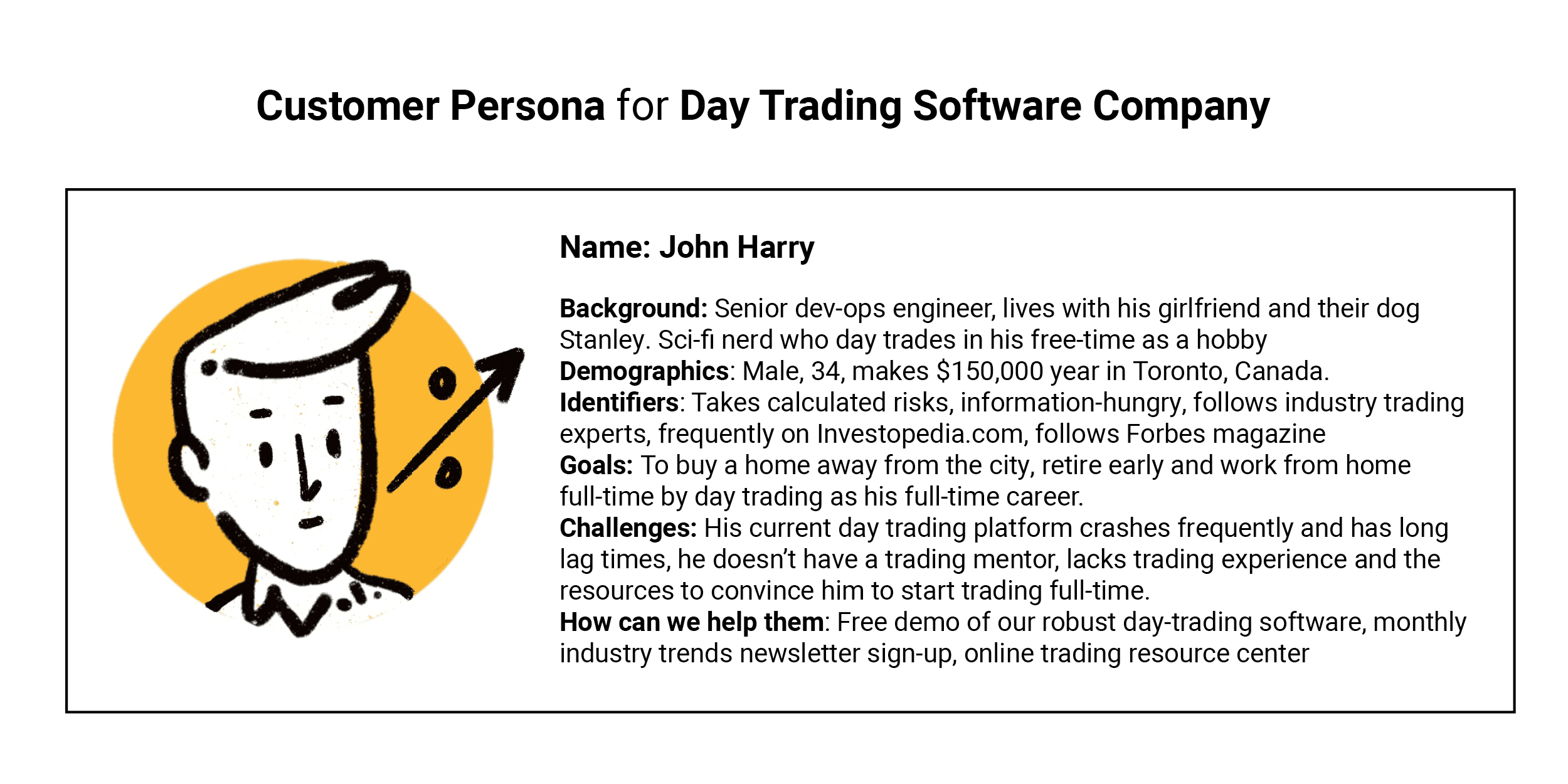
Much like brand guidelines, preparing your marketing personas will only benefit you if you use them. Re-imagine all of your existing advertising campaigns; how could they be better segmented and defined with your new (or refreshed) personas in mind?
Tips:
- You might only need one to three personas. Don’t over-do it.
- Even if you have a large customer base, you can group them by similar traits in most cases down to a few personas.
- Don’t get carried away with inventing a persona’s imaginary life. Focus on actionable items that matter and are usable in advertising.
Signal five: you’re not defining KPIs
Want to know how to make your life 1,000x easier? Use KPIs! It’ll remove your own guesswork and give your teams a greater sense of purpose, achievement and direction.
Setting advertising targets based on business objectives is critical to defining your PPC strategy, budget, and overall expectations.
Setting target KPIs allows you to measure and adjust your advertising activities in pursuit of your advertising targets, and ultimately, your business objectives.
This step is often skipped and creates doubt for everyone involved due to a lack of direction and definition of success. Here’s how we filter business objectives down to advertising KPIs:
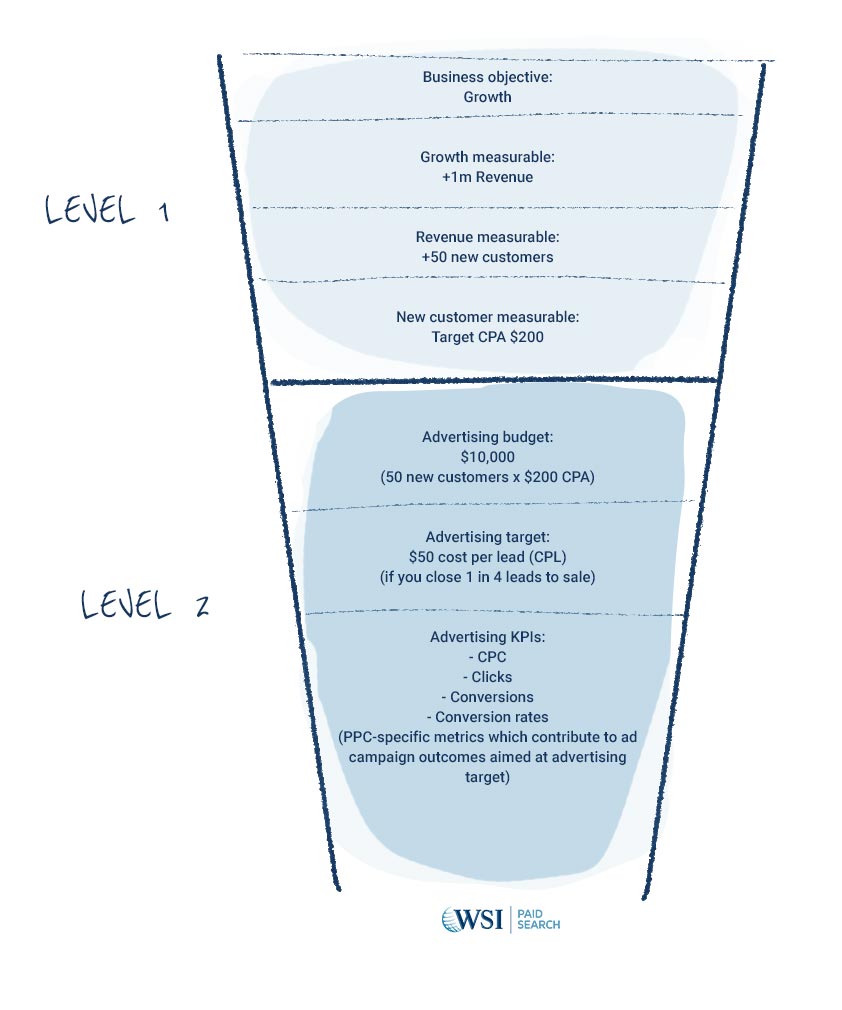
Following this process creates your advertising’s North Star.
Advertising KPIs are like the critical indicators on an aeroplane, such as altitude, which require constant evaluation and tweaking.
For example, let’s say the advertising target CPL is $50, and last month, your achieved CPL was $60. To achieve your target CPL, you might set an advertising KPI for the month ahead to improve the landing page conversion rate by 17%, from 5% to 5.85%.
Set KPIs for ad campaigns using this format:

“Action – Detail – Value – Unit – Deadline”
Improve Landing Page Conversion Rate by 17 percent by December 31st
Reference: https://www.executestrategy.net/blog/how-to-write-kpis
Signal six: you’re not tracking conversions
To know whether or not you’re achieving your KPIs, you need to track advertising conversions. Conversions occur when a visitor from an ad completes your desired action.
You need to consider and track all of the ways a potential customer may interact with your business as a result of seeing your ad:
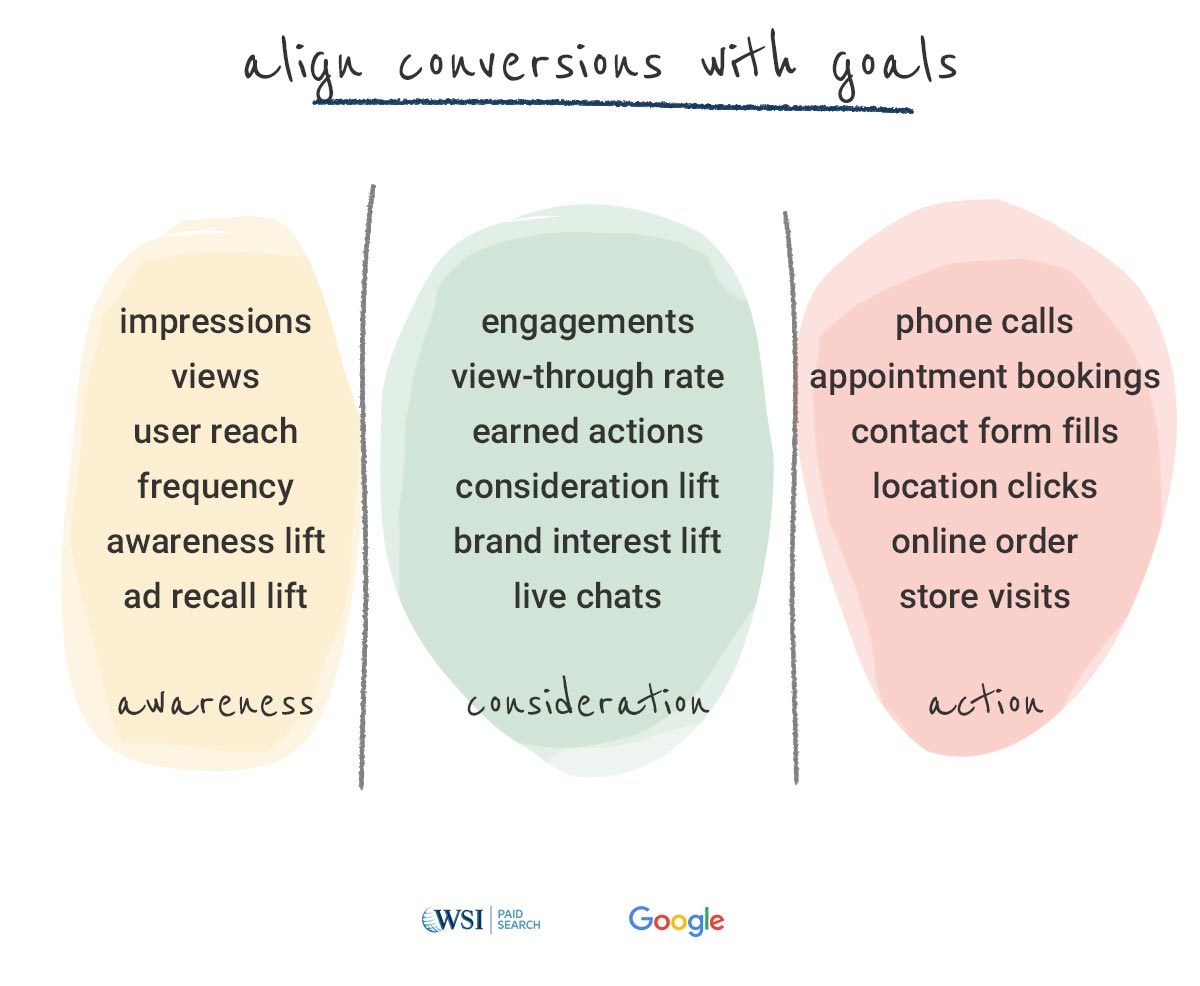
Depending on the type and purpose of the advertising campaign/strategy you are running, some or all of the above actions may be relevant to you for tracking. You will likely put more value in certain actions versus others. For example, it’s nice to know that someone shared your social media post, but it’s even better if they make a purchase online.
Top tips:
- Start with identifying the main few ways a potential customer can buy from you or become a lead. There won’t be many, and likely include phone calls, online purchases, or form fills.
- With your action-oriented bases covered, consider any other ‘lighter’ touchpoints that may occur earlier in the buying journey such as newsletter sign-ups.
- Make sure you have a way to track all of your conversion types and trace them back to their point of origin (campaign, keyword, etc.).
Signal seven: you’re not connecting traffic data to business data for ROAS
You don’t just want to track conversions. That’s easy. You want to really impress your boss, board of directors, or investors with ROAS reporting.
To determine the business value of your conversions and establish your ROAS you need to connect advertising conversion data to your CRM and/or Google Analytics. In simple terms – you need to know the value of your PPC conversions and measure this against their advertising cost.
This is usually done via native integration (for example – connecting Facebook directly to Salesforce), or using ad URL UTM parameters:
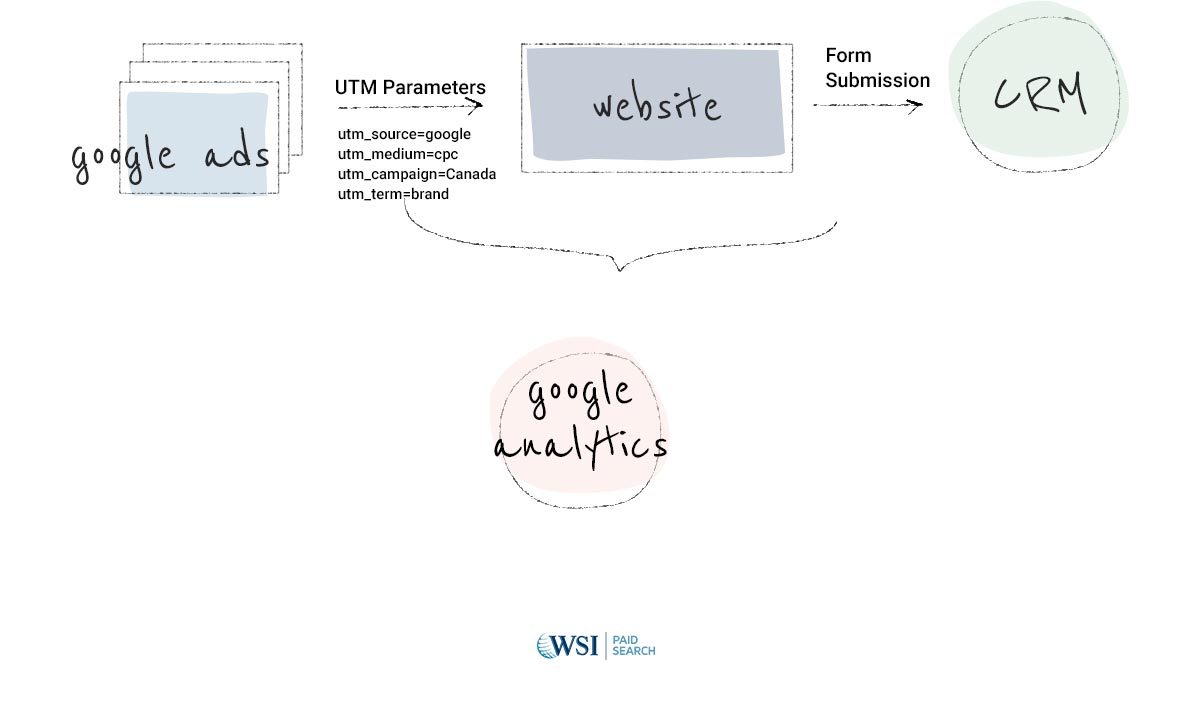
Beyond ROAS and measurement, this is critically important for informing your optimization decisions.
To demonstrate this, pick which campaign looks better from these two scenarios:
Scenario one:
- Campaign one:
- Traffic data: $5,000 ad spend, 100 leads, $50 CPL.
- Campaign two:
- Traffic data: $5,000 ad spend, 75 leads, $67 CPL.
Scenario two:
- Campaign one:
- Traffic data: $5,000 ad spend, 100 leads, $50 CPL.
- Business data: 20% lead to sale ratio, 20 sales, $250 CPA.
- Campaign two:
- Traffic data: $5,000 ad spend, 75 leads, $67 CPL.
- Business data: 40% lead to sale ratio, 30 sales, $167 CPA.
As the marketing decision-maker, in scenario one, you picked campaign one because it has a better CPL. In scenario two, you chose campaign two because it has a better lead to sale conversion ratio leading to better cost per sale (CPA) despite its higher CPL.
In scenario one, you only had traffic data available to you and would have made the wrong decision. With the addition of business data from your CRM in scenario two, you are enabled to make the correct decision.

Don’t shoot in the dark. Make sure you know which campaigns your leads and customers come from to inform your campaign optimization paths.
Signal eight: you’re not researching the best PPC strategy
Online advertising is exciting and offers a lot of promise. In your excitement, please don’t dive into the first tactic on your radar.
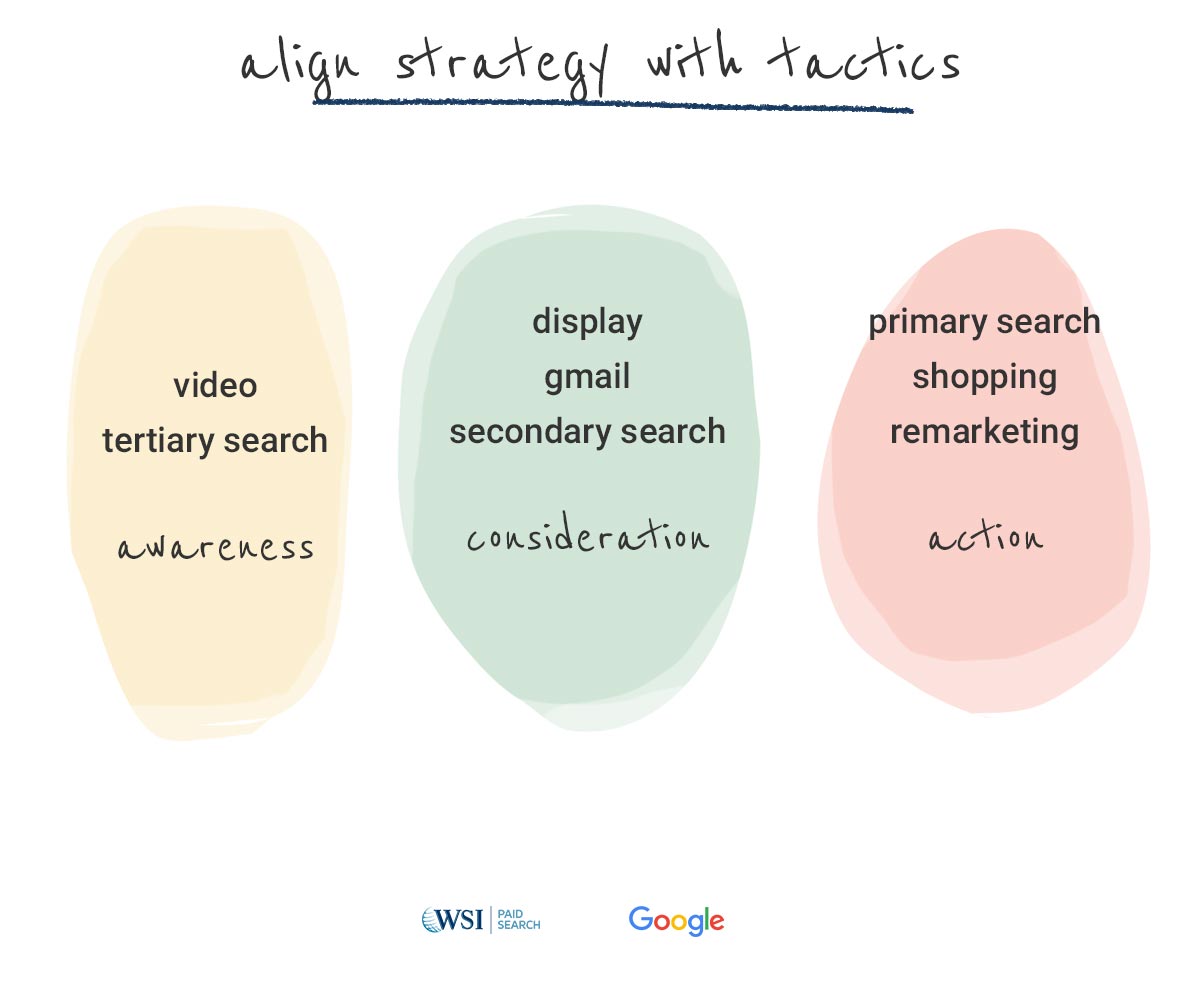
This graphic scratches the surface of just some of the advertising campaign types you may use on Google Ads at different stages of the buyer journey.
Your very important job is to research, forecast, and evaluate the potential of each advertising platform, campaign type, and strategy. This should be done with your marketing personas, messaging, and KPIs in mind.
From there, you might decide to start with certain elements for phase one and allow time for those to become established before adding further elements in future phases.
Signal nine: you’re not coping with advertising-created demand

Good news! Your ad campaigns are working and driving demand to your business. Bad news! You’re not keeping up with that demand, resulting in frustrated customers and staff.
Fascinating stats about your (potential) customer’s expectations:
- B2B:
- B2C:
The overarching theme from the research we selected above is speed. Speed to deliver, speed to make contact, and by extrapolation, generally being expected to move fast on the demand created by your advertising.
If you are failing with your speed to lead, order fulfilment, or any other process relating to an influx in demand from advertising, your advertising ROAS will suffer badly. In some cases, catastrophically.
We recommend that you start out slowly with any new advertising initiative to establish a baseline of performance and demand. Evaluate the impact on your business operation and how smoothly you dealt with this demand, and continue to level-up in increments. Rome wasn’t built in a day, and it collapsed when it became too large 😉
Signal ten: lack of synergy between PPC and other customer touchpoints
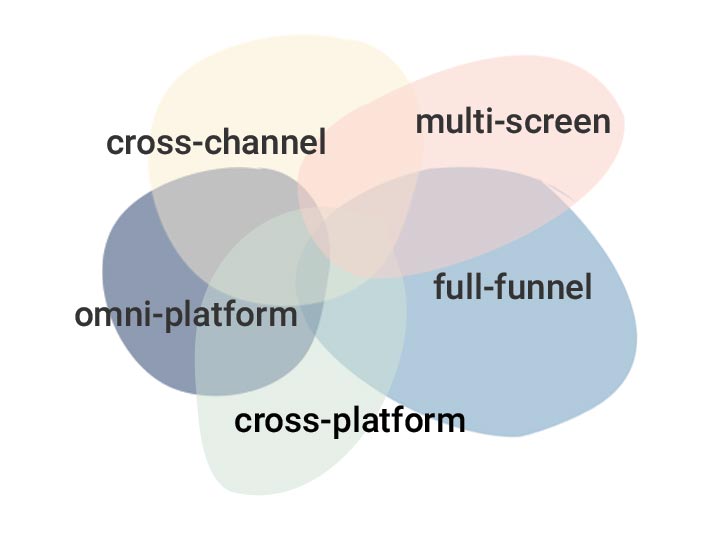
Cross-channel. Omni-platform. Multi-screen. Cross-platform. Full-funnel.
These marketing terms, which you may see around the web, all mean slightly different things, but they have one thing in common: synergy.
Online marketing and advertising is a never-ending relay-race with many interdependent components. If steps or elements are skipped, or if things are done in silos, the result is a fragmented advertising campaign and customer experience.
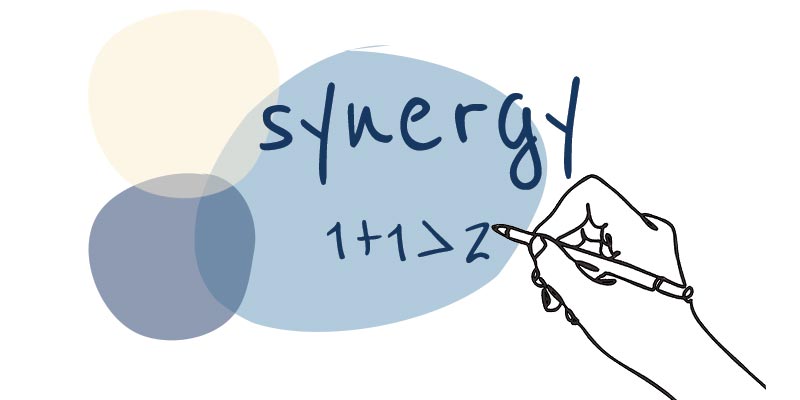
Your marketing message, aesthetic, promotions, and experience must be consistent wherever a potential customer may view or engage with you.
Your online advertising campaigns should not look or feel alien to a potential customer in comparison to your social media, email marketing, physical stores, customer service interactions, or other touchpoints.
The more effort you put into all of the ingredients of online marketing, such as those listed within this article, the greater the results will naturally be from your advertising. This, in essence, is the definition of synergy.
Signal eleven: you’re not giving it enough time
Advertising has immediate effects on medium-term results. This almost-oxymoron leaves a lot of marketers frustrated, impatient and making the wrong decisions, culminating in advertising campaigns being labelled a failure and abandoned prematurely.
In our vast experience, it takes 90-120 days for a new advertising campaign to reach peak performance or otherwise, which we classify as medium-term. Even with results being medium-term, you’ll likely still experience immediate effects.
For example, on the same day that you activate a new advertising campaign, it’s entirely possible that you’ll immediately notice an increase in traffic to your website, phone call or online purchases. Though, it’s unlikely that it will be the right amount of traffic, inquiries or purchases right out of the gate.
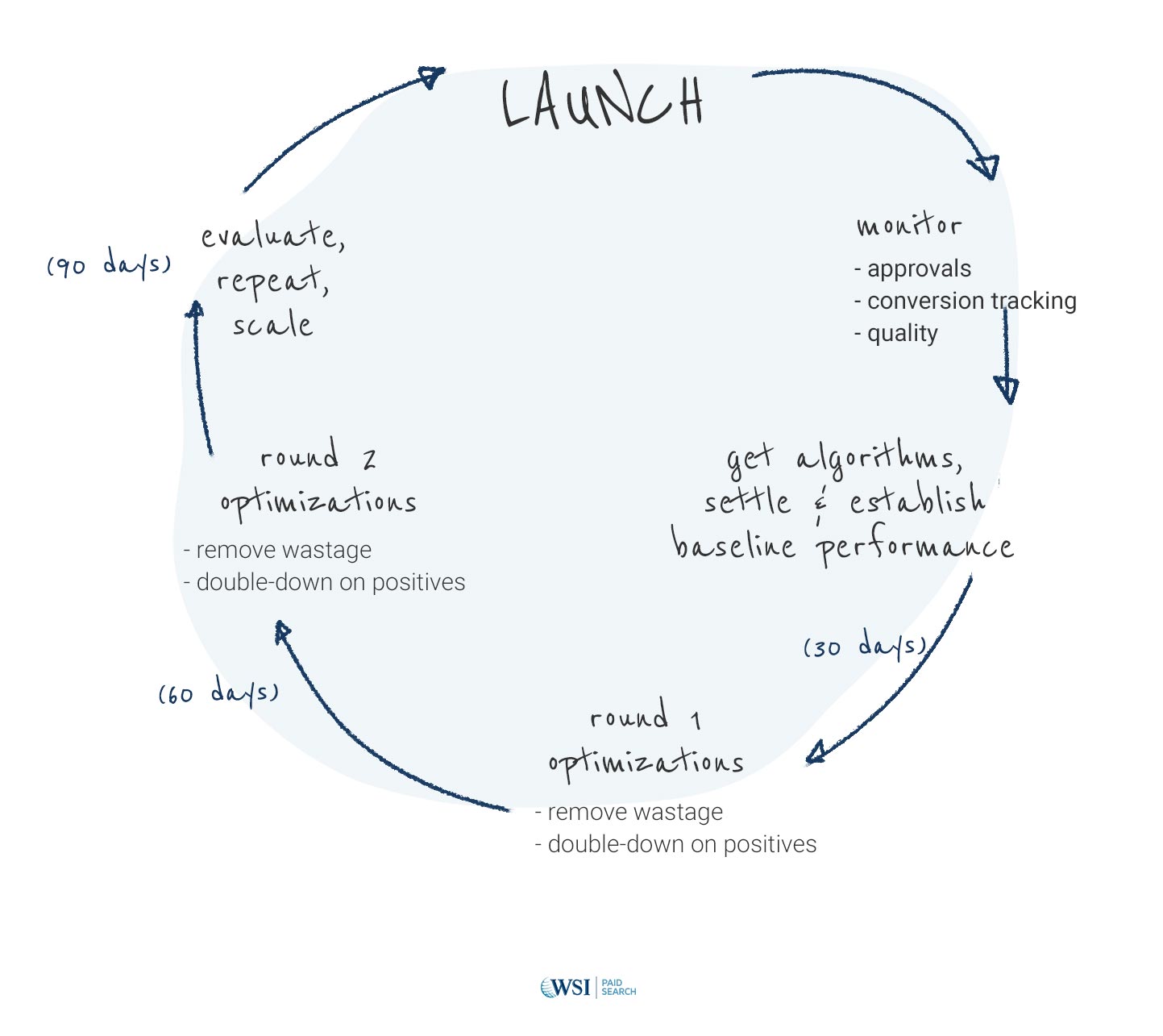
PPC is a process of cyclical optimization. You need to do one thing at a time, measure its effects, and repeat continuously.
After one month of letting the algorithm settle-down and establish baseline metrics, it then takes 2-3 months of implementing optimizations to either reach peak performance or determine a failure. Often-times the early months offer the lowest-hanging fruits of optimization with a large impact in a short space of time. After the first few months, it becomes a cumulative effect of marginal gains over the remainder of the campaign lifetime.
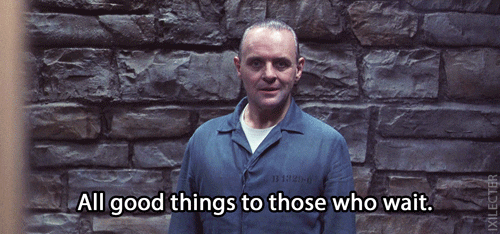
Don’t give up. Embrace the process. You’re probably closer to advertising success than you think.
Conclusion
Problems rapidly become less problematic when you understand the cause of them, right?
We hope this article has made the weight that you carry a little bit lighter and enabled you to self-identify which marketing issues you need to fix in order to set your advertising up for success.
As you go through this process, please be sure to address the root-cause or origin of these issues in addition to the ‘fix’ itself. This will set you up for continued success and avoid mistakes from repeating themselves.
You’ve got this.













